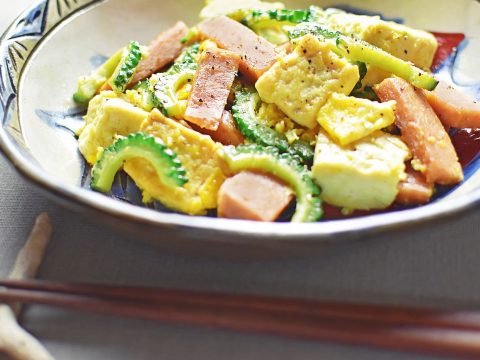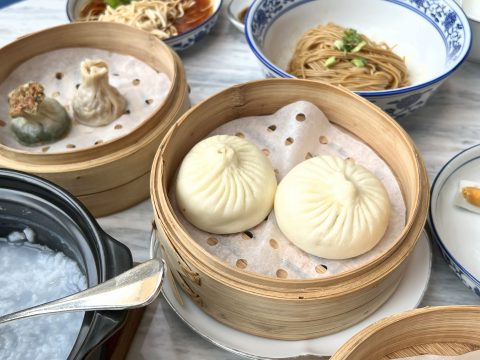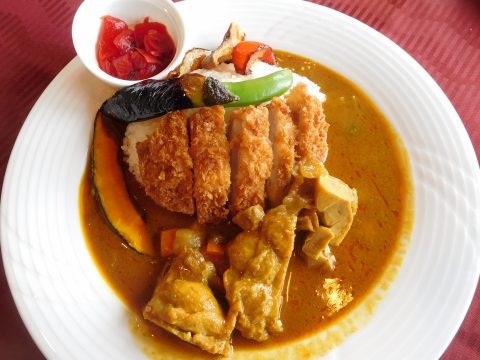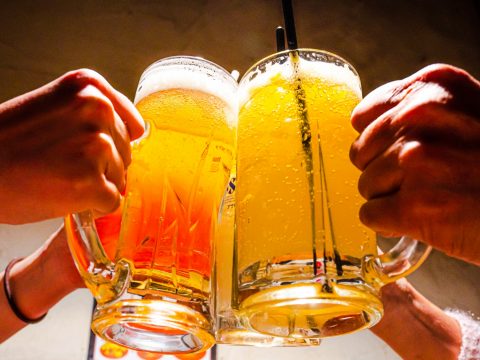Highball (ハイボール)
JAPANESE FOODS
18.02.2023

Imagine: it’s the end of a long day. You’re on the way back from the train station to your apartment. It’s dark out, and as you’re walking through the twisting streets, you pass the warm light of an open Izakaya. You’re tired from spending a long day in the office, and you’d really like a drink. So you go in and sit on the first empty stool. You look around and realise that most people are drinking the same thing: a Highball.
I remember the first time I came to Japan from the UK where beer and cider are the go-to drinks. I kept seeing the word “Highball” written in katakana everywhere, but I’d never heard of it. Similarly, when my Japanese friend came to the UK for her year abroad, she told me at the first bar she went to she tried to order a Highball (to the confusion of all the bar staff).
Today, I would like to introduce to you one of Japan’s favourite drinks. A Highball is a cocktail made by mixing whiskey and soda water, often with a splash of lemon juice. Everyone knows that Japan is famed for its amazing whiskey, but a Highball can be a refreshing alternative if you don’t want to get too drunk or are simply in the mood for a cool alcoholic drink.

History
The initial popularity of whiskey drinking in Japan can be seen in the 1950s and 60s. In post-war Japan, with high inflation and a crushed economy, whiskey was a relatively cheap, high-percentage alcohol. At a similar time, the 3 main whiskey brands (Suntory, Daikoku Budoshu, and Nikka) were in a battle for the top spot on the whiskey market, drawing attention to the drink. It became popular to consume whiskey with food, a trend we still see as Highballs are often drunk alongside bar food like fried chicken and edamame beans.
However, the Highball Boom didn’t take place until a few decades down the line. In the 2000s, domestic whiskey producers began to promote the consumption of Highballs. Various marketing campaigns successfully induced a “Highball craze” that is still running throughout Japan to this day.

What kinds of whiskey are used in a Highball?
Generally speaking, there are two types of whiskey: aged and non-aged. Aged whiskey has been, well, aged. Typically in wooden casks, the whiskey’s chemical makeup and taste change over time making it richer or stronger. This aging process can take up to twenty years.
Non-aged whiskey is one that hasn’t gone through the process of aging. This doesn’t mean that the whiskey is any worse, usually that the flavour is just less complex.
When it comes to a Highball, obviously using an aged whiskey will make it more expensive, and give it a deeper flavour. But using a non-aged whiskey can be just as nice. Really what matters is the alcohol content. Whiskeys with an ABV of around 43% or below typically make smooth Highballs that are easy to drink with a nice flavour.
Similar Drinks
The world of the Highball is fascinating, isn’t it? However, if you don’t like the taste of whiskey or soda water, the idea might be a little off-putting. However, there are other soda-infused drinks that are just as popular—and just as cheap—in Japan.
A chūhai (チューハイ) is essentially the same as a Highball, but the whiskey is replaced with shōchū. This is often flavoured with lemon, similar to a highball.
Also, there’s Oolong-hai, a Highball where the soda water is replaced with Oolong tea! If you aren’t a fan of carbonated drinks or the taste of soda water, this can be a pleasant alternative.


So, if you’re in the mood for an alcoholic drink, or simply curious about the flavour, I would recommend trying a Highball. I mean, it has the be one of the most popular drinks for a reason, right?

Ella Clayton
Ella Clayton is a food writer, traveler, and all-around Japan enthusiast. Studying in Japan for her bachelor’s degree, she has ventured from Kansai and Kanto, and can say definitely: Osaka style Okonomiyaki is the best.
Read previous articles by the writer
Read latest articles
KEYWORDS
- # PICKPICK
- # Resume
- # alcohol
- # Rice
- # Soup
- # winter food
- # Fast Food
- # seafood
- # spicy foods
- # raw food
- # fermented food
- # Transportation
- # MEAT
- # Edo culture
- # suits
- # clothing
- # drink
- # fish
- # seasoning
- # Japanese New Years Foods
- # Toshikoshi soba
- # Osechi Ryori
- # Ozoni
- # Christmas
- # Japanese fusion pasta
- # Wafu Pasta
- # Japanese Hot Pot
- # なべ
- # 鍋
- # Miyazaki
- # Chicken Nanban
- # Karamen
- # Autumn Wagashi
- # Mushi-yokan
- # Imo-yokan
- # Japanese Autumn Fruits
- # Autumn
- # Vending Machine
- # fall
- # dango
- # Chestnut rice
- # saury
- # Mushroom
- # Rice vinegar
- # Japanese condiments
- # 調味料
- # Sake
- # Mirin
- # Soy sauce
- # Japanese Noodles
- # Udon
- # Ramen
- # Yakisoba
- # Soba
- # Japanese Seaweed
- # 海藻
- # かいそう
- # Payslip
- # Training
- # Japanese summer foods
- # 和菓子
- # Wagashi
- # ryokucha
- # 夏
- # 飲み物
- # Ramune
- # ラムネ
- # Pokari Sweat
- # ポカリスエット
- # Calpis
- # カルピス
- # Mugicha
- # ume
- # 梅
- # うめ
- # umeshu
- # job hunting
- # tofu
- # Recruitment in Japan
- # miso
- # Japanese cuisine
- # Yellowtail and bonito
- # Children’s Day
- # Kashiwa Mochi
- # Chimaki
- # fruits
- # Kusamochi
- # Types of Agriculture in Japan
- # bread
- # パン
- # パン屋さん
- # japanese bread
- # shokupan
- # meal blead
- # anko bread
- # 桜
- # さくら
- # cherry blossom
- # visa
- # hanami
- # omotenashi
- # sakura
- # おもてなし
- # Japanese hospitality
- # oshibori
- # wet hand towel
- # hand towel
- # restaurant
- # Commuting in Japan
- # Women-only cars
- # Exit gate
- # japanese train
- # train
- # valentine
- # Japanese sweets
- # 朝食
- # Japanese Breakfast
- # Breakfast
- # Japanese
- # 日本
- # healthy
- # persimmons
- # hoshigaki
- # HR
- # work in Japan
- # jinji ido
- # corporate systems
- # Japanese work culture
- # bento
- # ekiben
- # shinkansen
- # omiyage
- # train station
- # Japanese culture
- # work culture
- # mentaiko
- # umeboshi
- # Japanese snacks
- # potato chips
- # Japanese potato chips
- # Japanese writing
- # seaweed
- # konbu
- # ocean foods
- # shio konbu
- # dashi
- # miso soup
- # food processing
- # pear
- # nashi
- # sweet potato
- # japanese sweet potato
- # stingray
- # satsuma imo
- # food value chain
- # homecooking
- # agriculture
- # Japanese homecooking
- # farming
- # nikujaga
- # shojin ryori
- # meat and potatoes
- # traditional foods
- # comfort food
- # buddhist food
- # manufacturing
- # factory
- # eihire
- # vegetarian
- # food and beverage
- # izakaya
- # yatai
- # japanese festival
- # taiyaki
- # matsuri
- # summer
- # Ikayaki
- # smart agriculture
- # shaved ice
- # kakigori
- # かき氷
- # summer dessert
- # Japan
- # Japanese foods
- # dessert
- # fruit
- # matcha
- # icecream
- # Pikcup
- # Pikc up
- # Pcikup
- # skilled labor visa
- # working visa japan
- # Dineer Table in Japan
- # Japanese manner
- # Japanese food
- # Japanese Table Manner
- # Chopsticks
- # Japanese traffic signs
- # traffic information
- # road rules in Japan
- # chocolate
- # green tea
- # Osaka
- # Work Japan
- # Japanese company
- # ikura
- # sushi
- # nigiri
- # wasabi
- # PCIK
- # PICK UP
- # PICK
- # PICKUP








